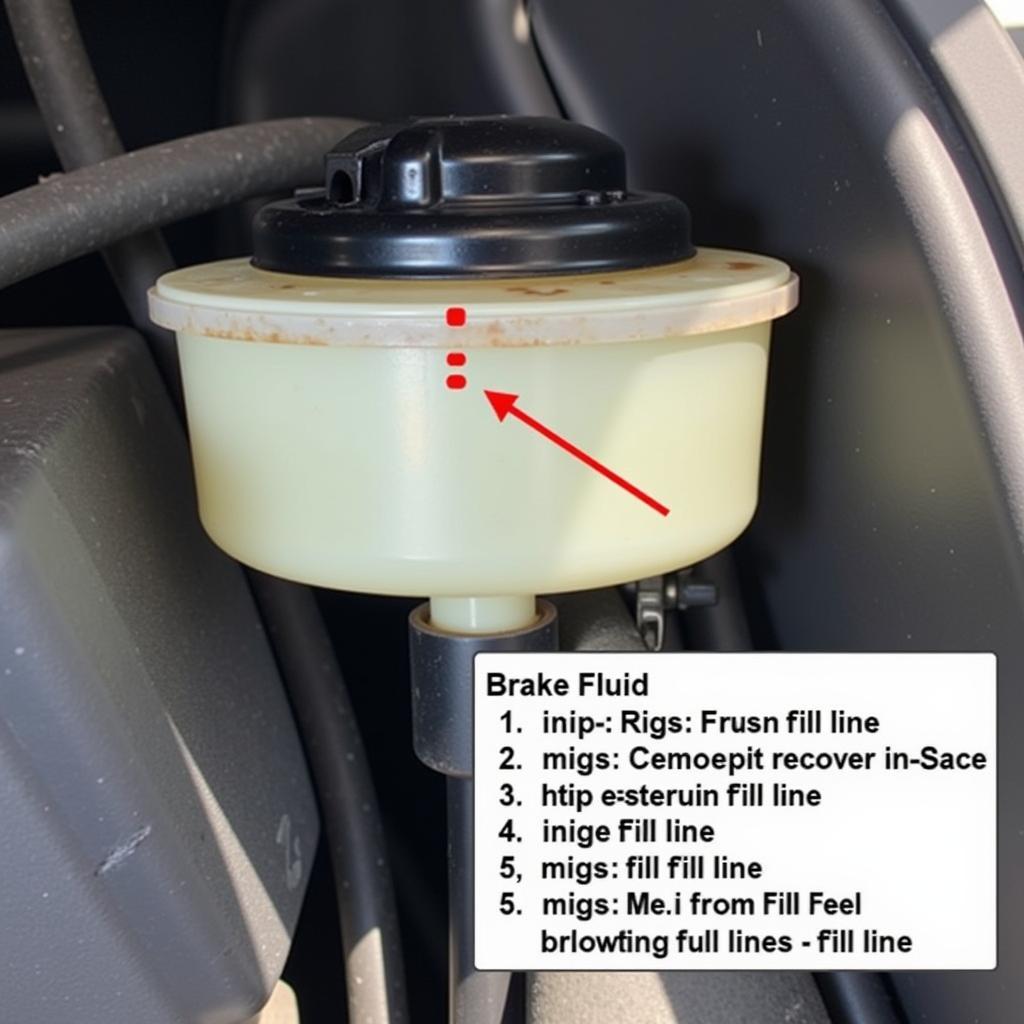The brake pad warning light on your 2003 Audi A6 is an essential safety feature. When illuminated, it signals that your brake pads have worn down and need replacing. While this light is crucial for your safety, knowing how to reset it after replacing your brake pads can save you an unnecessary trip to the mechanic.
This guide will walk you through the process of resetting the brake pad warning light on your 2003 Audi A6. We’ll explore different methods, ranging from simple manual resets to using a diagnostic tool.
Understanding Your 2003 Audi A6 Brake Pad Warning System
Before we delve into the reset procedure, it’s essential to understand how the brake pad warning system works. Your 2003 Audi A6 likely uses a sensor located within the brake pad assembly itself. This sensor, often a simple wire loop, is designed to break when the brake pad material wears down to a certain level.
When this wire breaks, it triggers the brake pad warning light on your dashboard. Replacing your brake pads with new ones, including new sensors, is crucial to maintain optimal braking performance and safety.
Resetting the Brake Pad Warning Light: Manual Methods
In some cases, you can reset the brake pad warning light on your 2003 Audi A6 manually. Here are two common methods:
1. Ignition Cycling:
- Turn the ignition to the “on” position without starting the engine.
- Wait for 30 seconds.
- Turn the ignition off.
- Repeat this cycle 3-4 times.
2. Battery Disconnection:
- Disconnect the negative terminal of your car battery.
- Wait for at least 15 minutes.
- Reconnect the negative terminal.
Note: These manual methods may not work for all 2003 Audi A6 models. If these methods fail to reset the warning light, you may need to use a diagnostic tool.
Resetting the Brake Pad Warning Light: Using a Diagnostic Tool
For a more reliable reset, consider using a diagnostic tool. This method involves connecting a device to your car’s OBD-II port, typically located under the dashboard on the driver’s side.
Diagnostic tools vary in complexity and price. You can find simple code readers that allow you to reset the brake pad warning light, as well as more advanced tools that offer a wider range of diagnostic capabilities.
Here’s a general overview of using a diagnostic tool:
- Connect the Diagnostic Tool: Plug the diagnostic tool into the OBD-II port.
- Turn on the Ignition: Turn the ignition to the “on” position without starting the engine.
- Access the Brake System: Navigate to the brake system menu on the diagnostic tool.
- Select “Reset Brake Pad Warning Light”: Choose the option to reset the warning light.
- Follow the On-Screen Instructions: The tool will guide you through the remaining steps.
Note: The exact steps and menu options may vary depending on the specific diagnostic tool you are using. Always refer to the tool’s instruction manual for detailed guidance.
When to Seek Professional Help
While resetting your brake pad warning light can often be done yourself, there are instances where seeking professional assistance is recommended.
- Persistent Warning Light: If the warning light remains illuminated after trying the reset methods mentioned above, it could indicate a deeper issue with your brake system.
- Uncertainty or Difficulty: If you are unsure about any aspect of the reset process or encounter difficulties, it’s always best to consult a qualified mechanic.
Tips for Maintaining Your Audi A6 Brake System
Proper brake maintenance is essential for your safety on the road. Here are some tips to keep your Audi A6 braking system in optimal condition:
- Regular Inspections: Have your brakes inspected by a qualified mechanic at least once a year or every 12,000 miles.
- Quality Brake Pads: When it’s time for replacements, invest in high-quality brake pads that are compatible with your Audi A6 model.
- Brake Fluid Flush: Have your brake fluid flushed and replaced according to your Audi’s recommended maintenance schedule.
Conclusion
Resetting the brake pad warning light on your 2003 Audi A6 is a relatively straightforward process. Whether you choose a manual method or opt for a diagnostic tool, understanding the steps involved can save you time and money.
Remember, your brakes are a critical safety component of your vehicle. If you encounter any persistent issues or have doubts about your ability to perform these procedures safely, do not hesitate to seek professional help. By staying proactive with your brake maintenance, you can ensure optimal performance and, most importantly, a safe driving experience.

